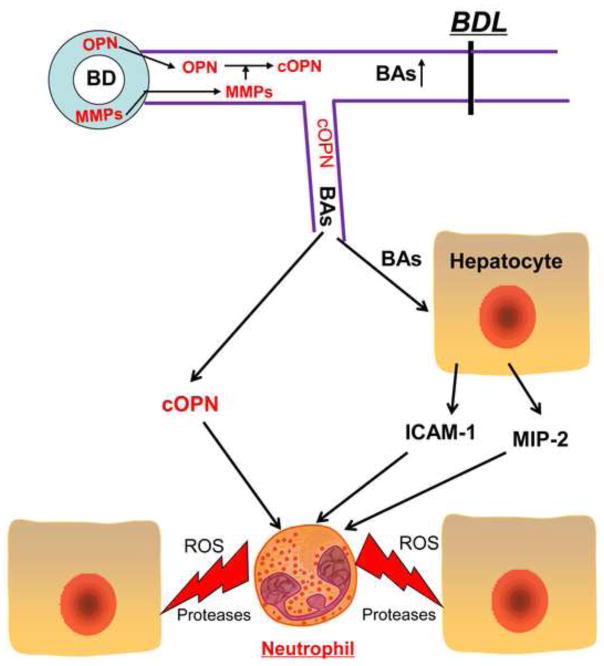Figure 8.
Proposed mechanism of inflammatory liver injury in the early phase of obstructive cholestasis. After bile duct ligation (BDL), osteopontin (OPN) released from biliary epithelial cells could be cleaved by matrix metalloproteinases (MMPs) in bile. When the growing pressure in the biliary system results in rupture of cholangioles, cleaved OPN enters the parenchyma, and then attracts and activates neutrophils. The process is facilitated by intercellular adhesion molecule-1 (ICAM-1) expression on hepatocytes, which is induced by high concentrations of bile acids (BAs) leaking into the parenchyma. If OPN is absent, CXC chemokines such as MIP-2, which are also induced by BAs in hepatocytes, can promote neutrophil activation and recruitment resulting in a similar but delayed inflammatory injury.

